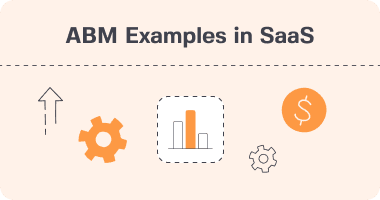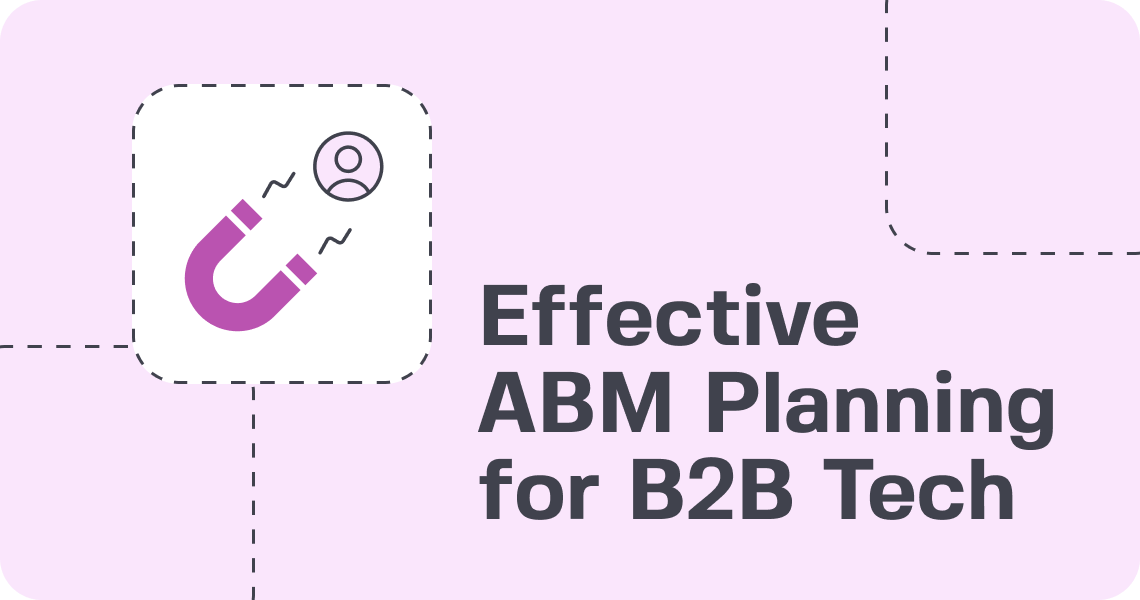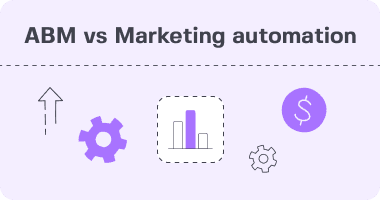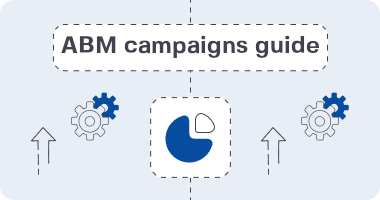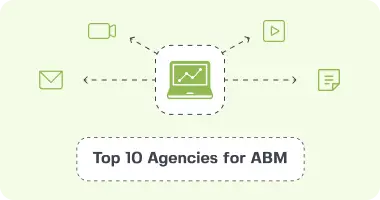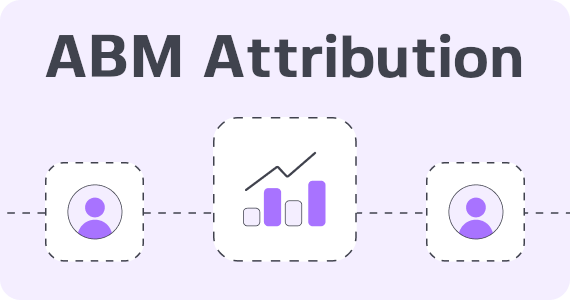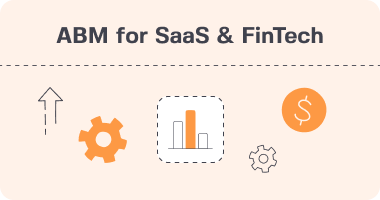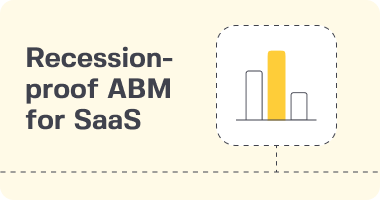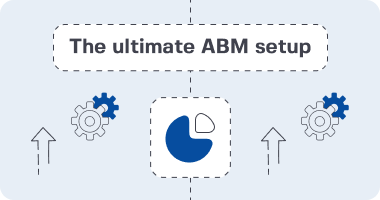What Is Account-Based Marketing and Why Are KPIs Important?
Account-Based Marketing (ABM) is a focused B2B strategy that personalizes marketing efforts for high-value target accounts rather than casting a wide net. ABM attribution shifts the focus to key target accounts, allowing for more personalized content and engagement. This focused method is what sets it apart as a game-changer for today’s complicated sales landscapes.
It aligns with larger company initiatives, filling gaps such as the lack of qualified leads or the disconnect between sales and marketing departments. B2B marketing automation strategy ensures success by measuring specific KPIs, which offer actionable insights that contribute to refining campaigns over time and ultimately driving a much higher ROI.
ABM’s focus on personalization, coupled with the right KPIs, set the stage for long-term growth and measurable success.
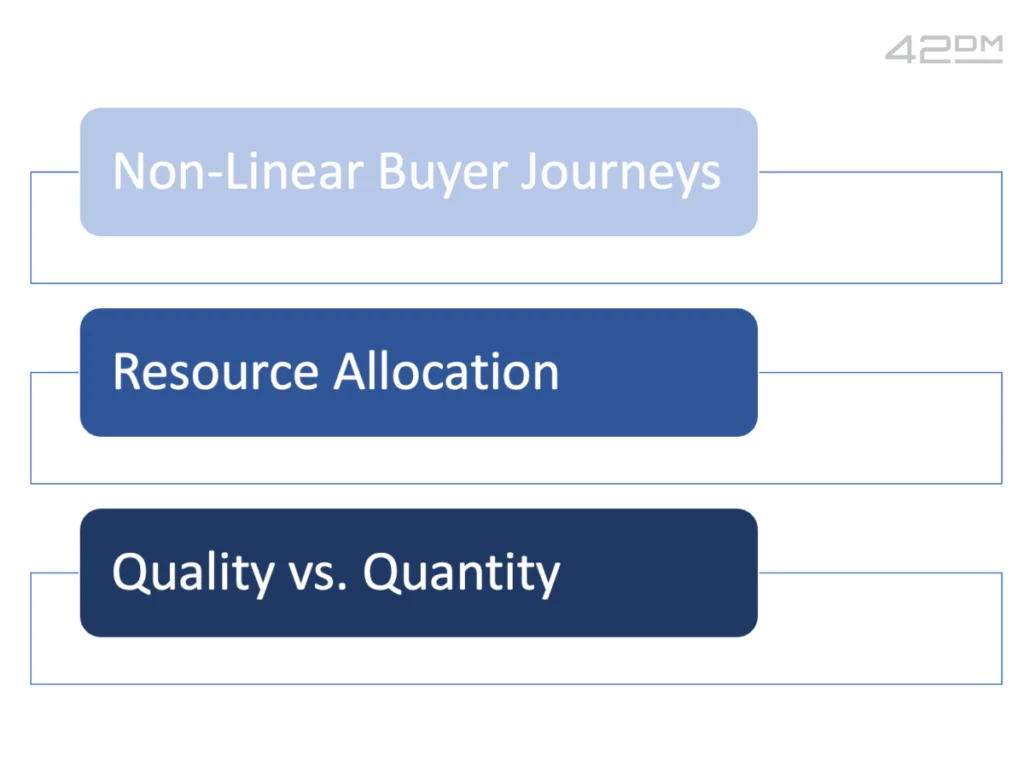
6 Key Account-Based Marketing KPIs and Metrics You Should Track
This section will introduce the six KPIs and metrics that every ABM campaign should focus on for measuring success. To measure the success of your Account-Based Marketing (ABM) campaigns, focusing on key performance indicators (KPIs) ensures your strategy remains effective and data-driven.
These metrics can show what is working in your campaigns, as well as where you need to improve. Below are six essential KPIs every ABM strategy must incorporate:
1. Account Engagement
Monitoring the level of engagement with your high-value target accounts is absolutely essential to grasping how well-hitting your outreach actually is. Metrics such as incremental increases in website visits, content downloads, email open rates, and social media interactions give you tangible, destination-based evidence that your content is resonating.
Tools such as Google Analytics and most CRM software now have capabilities to combine these metrics into helpful data. High engagement signals what topics or themes a campaign did well with, helping to inform future messaging and content focus.
2. Sales and Marketing Alignment
Sales and marketing team alignment is key to a unified ABM strategy. Metrics like increase in meetings booked, lead quality (MQLs and SQLs), and pipeline velocity reflect the collaboration’s success.
Strategic collaboration and frequent communication between teams working toward unified goals create crucial synergy that translates into campaign success.
3. Target Account Reach
It goes without saying, reaching the right accounts is kind of the point here. Tracking the percentage of engaged accounts compared to targeted accounts helps you see how accurate your targeting efforts are.
As engagement and ROI measures start to build over time, you can refine account lists and direct resources to focus on the highest-value opportunities.
4. Conversion Rates
Calculate how many engaged accounts move forward in the sales funnel. This KPI helps pinpoint friction points and optimize the customer journey for smoother transitions.
5. Revenue Generated from Target Accounts
Total revenue from target accounts and average deal size are important metrics. Revenue-focused KPIs are direct measures of your campaign’s impact on your company’s bottom line.
Determining ABM-specific ROI will help you see more clearly which strategies are providing the highest returns.
6. Customer Retention and Expansion
Most importantly, beyond just acquisition, retaining and continuing to expand within acquired accounts is the key to long-term sustainable success. Metrics such as Customer Lifetime Value (CLV), retention rates, and upsell opportunities are all indicators of account growth.
After all, strong relationships are a hallmark of retention and provide opportunities for upsell and cross-sell.

Best Practices for Tracking ABM KPIs and Metrics
Provide actionable tips and strategies for effectively tracking and analyzing the ABM KPIs discussed above. Tracking and analyzing ABM KPIs is a meticulous process that’s crucial for yielding actionable insights and measurable outcomes. By focusing on the right tools, goal-setting, and regular reporting, you can build a robust framework for monitoring and optimizing your ABM strategy.
Leveraging the Right Tools
The best tracking starts by using tools specifically built to aggregate and structure data. A robust CRM system serves as the backbone, consolidating account information to monitor engagement, pipeline creation, and conversion rates effortlessly. Salesforce Reporting reports in Salesforce provide one single source of truth to showcase account activity.
This flexibility allows account based marketing framework and sales teams to work together in a much more impactful way. Adding in marketing automation tools such as Marketo or Pardot allows you to track email open rates with ease. Perhaps the easiest KPIs to track are CTRs.
Additional tools ABM platforms like Demandbase or 6sense can help aggregate this data for deeper, more holistic analytics. They present stellar overviews about key metrics such as market penetration and account-level interaction. These tools make it easy to track and give you visibility into how each metric translates to your bigger business objectives.
Setting Realistic Goals
Without these clear-cut, realistic goals, it will drive you mad and derail ABM success. Whatever the case, be sure you know what you’re trying to achieve first, and let that guide which KPIs you focus on. Ensure they follow SMART criteria – Specific, Measurable, Achievable, Relevant, Time-bound.
If the goal of your account-based initiative is to increase overall account engagement, identify what that looks like. Set a goal to improve your CTR by 15% over the next quarter. Establishing these goals helps to keep you focused and gives you a point of reference to measure ABM’s success against.
Regular Reporting and Optimization
Regular reporting helps ensure alignment between various teams involved in ABM and creates a culture of continuous improvement. Dashboards such as those in Tableau and Power BI allow for real-time monitoring. This ability allows you to identify trends faster and pivot your strategy.
If you discover that open rates or CTRs are low, for instance, adjusting email subject lines or CTAs can lead to a marked increase in engagement. Regularly analyzing metrics like retention rates and pipeline velocity clarifies how efficiently accounts move through the funnel, enabling quicker deal closures and optimized ABM strategies.

Common Pitfalls to Avoid When Measuring ABM Success
When measuring Account-Based Marketing (ABM) success, measuring the right metrics matters. Too often, companies go awry by over-indexing on the wrong metrics or not taking a big-picture perspective. These disconnects can dilute the accuracy and intent of ABM efforts.
Focusing Only on Top-of-Funnel Metrics
One of the most frequent mistakes in ABM measurement is placing excessive emphasis on top-of-funnel metrics, such as website visits or initial engagement rates. Though these indicators give you a window into awareness, they are only the beginning.
ABM flourishes in a holistic full-funnel approach, where each stage—account identification to pipeline generation and closed-won opportunities—is closely monitored. For example, measuring middle-funnel actions such as scheduling meetings or downloading content can indicate if prospects are moving closer to a conversion.
Likewise, bottom-funnel metrics like deal velocity or account expansion directly link your efforts to actual revenue outcomes. The value of this multifaceted tracking is further amplified when you bring in the power of automation and data-driven strategies.
Organizations that implement AI-powered account-based marketing tactics see a 59% improvement in pipeline productivity. Those left behind with manual processes find it increasingly hard to scale. Greater engagement across the funnel automation provides timely, tailored and personal follow-up, which prevents chasing after leads later down the funnel and wasting valuable resources.
At its heart, ABM is about personalization and precision. Too often teams still push out one-size-fits-all content that doesn’t speak to the needs of those key accounts. Combining analytical data with focused, in-depth case studies of comparable success stories can build meaningful relevance and help guide prospects through the funnel to conversion.


